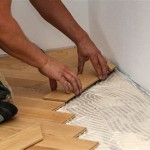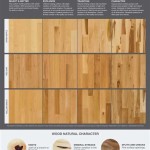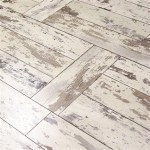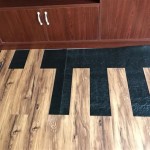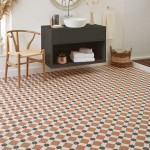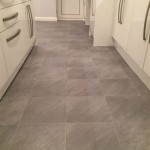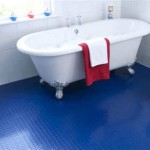Hardwood Flooring in Contemporary Homes: A Timeless Choice for Modern Living
Hardwood flooring has long been recognized for its beauty, durability, and timeless appeal. While often associated with traditional design styles, hardwood offers a compelling option for contemporary homes, seamlessly blending natural warmth with modern aesthetics. Its versatility allows it to complement minimalist, maximalist, and everything in between, making it a valuable asset in any contemporary design project.
Contemporary homes, characterized by clean lines, open spaces, and a focus on natural light, benefit significantly from the inclusion of hardwood flooring. The natural grain and texture of wood introduce an element of organic beauty, softening the often-stark architectural features of modern designs. Furthermore, hardwood's longevity and ease of maintenance make it a practical and sustainable choice for homeowners seeking both style and function.
The selection of hardwood flooring for a contemporary home requires careful consideration of several factors, including wood species, color, plank size, and finish. Understanding these elements allows designers to create a cohesive and visually striking space that reflects the homeowner's individual style while adhering to contemporary design principles.
Choosing the Right Wood Species for a Contemporary Aesthetic
The species of wood chosen for flooring significantly impacts the overall look and feel of a contemporary space. Different wood species possess unique grain patterns, colors, and hardness levels, each contributing to a distinct aesthetic. For contemporary homes, certain species have emerged as popular choices due to their inherent characteristics.
Oak, both red and white varieties, remains a classic choice due to its durability and distinctive grain pattern. White oak, in particular, is prized for its neutral tones, which readily accept stains and finishes, allowing for customization to suit specific design preferences. The pronounced grain of oak adds visual interest without overwhelming the clean lines of a contemporary space. Its ability to withstand high traffic makes it a practical choice for active families.
Maple is another excellent option, known for its smooth, fine grain and light color. This creates a bright and airy feel, ideal for contemporary homes aiming to maximize natural light. Maple’s subtle grain pattern provides a more understated elegance compared to oak, making it well-suited for minimalist designs. However, maple is a denser wood and can be more challenging to stain evenly, requiring careful preparation and application. Its hardness also holds up well with wear and tear over time.
Walnut, with its rich, dark color and distinctive grain, offers a more dramatic and luxurious option. Walnut flooring adds warmth and sophistication to a contemporary space, providing a grounding element that contrasts beautifully with lighter walls and furnishings. While more expensive than oak or maple, walnut's inherent beauty and durability make it a worthwhile investment. The deep tones of walnut can also help to conceal dirt and scratches, making it a practical choice for high-traffic areas. It is important to note, walnut is a fairly soft hardwood when compared to oak and maple.
Exotic wood species, such as bamboo and teak, are also gaining popularity in contemporary homes. Bamboo, a rapidly renewable resource, offers a sustainable and stylish alternative to traditional hardwoods. Its unique grain pattern and light color create a modern and eco-friendly aesthetic. Teak, known for its water resistance and durability, is often used in areas prone to moisture, such as kitchens and bathrooms. Its rich, golden-brown color adds a touch of warmth and luxury to any space.
Color and Finish: Enhancing the Contemporary Feel
The color and finish of hardwood flooring play a crucial role in shaping the overall aesthetic of a contemporary home. Contemporary design often favors neutral tones, such as grays, whites, and natural wood colors, to create a clean and uncluttered look. The choice of finish further enhances the wood's natural beauty while providing protection and influencing its overall appearance.
Light-colored hardwood flooring, such as bleached oak or whitewashed maple, is a popular choice for contemporary homes. These light tones reflect light, making spaces feel larger and brighter. They also create a calming and airy atmosphere, ideal for minimalist designs. Light-colored floors provide a versatile backdrop for furniture and accessories, allowing for easy customization of the space.
Gray-toned hardwood flooring has also gained significant traction in contemporary design. Gray floors offer a sophisticated and modern alternative to traditional brown tones. They complement a wide range of color palettes, from cool blues and greens to warm oranges and reds. Gray flooring can also create a sense of depth and texture, adding visual interest to a contemporary space. Selecting a darker grey will help to conceal dirt and scratches.
Natural-toned hardwood flooring showcases the wood's inherent beauty and warmth. These floors often feature a clear or matte finish that allows the natural grain and color variations to shine through. Natural-toned floors create a connection to nature, bringing a sense of organic beauty to a contemporary space. They are a versatile choice that can be paired with various design styles, from Scandinavian to mid-century modern.
The finish applied to hardwood flooring can significantly impact its appearance and durability. Matte finishes are becoming increasingly popular in contemporary homes, as they offer a low-luster look that minimizes glare and reflects light softly. Matte finishes also tend to show less wear and tear than glossy finishes, making them a practical choice for high-traffic areas. Satin finishes provide a slightly higher sheen than matte finishes, offering a balance between durability and aesthetics. Glossy finishes, while less common in contemporary homes, can be used to create a dramatic and luxurious effect. However, they require more maintenance and are more prone to showing scratches and scuffs.
Plank Size and Installation: Defining Space and Style
The size and installation pattern of hardwood planks can dramatically impact the visual perception of a space and contribute to the overall contemporary aesthetic. Wider planks, in particular, have become increasingly popular in contemporary homes, as they create a more spacious and luxurious feel. Different installation patterns can also be used to enhance the visual appeal of the flooring.
Wide plank flooring, typically ranging from 5 inches to 12 inches or more, offers a contemporary and sophisticated look. Wide planks highlight the natural grain and character of the wood, creating a sense of grandeur and openness. They also require fewer seams than narrower planks, resulting in a cleaner and more streamlined appearance. Wide plank flooring is particularly well-suited for larger contemporary homes, where it can make a significant visual impact.
Narrow plank flooring, typically ranging from 2 inches to 4 inches, offers a more traditional and classic look. While less common in contemporary homes, narrow plank flooring can still be used to create a stylish and visually interesting space. Narrow planks can be arranged in various patterns, such as herringbone or parquet, to add texture and dimension to the floor.
The installation pattern of hardwood flooring can also significantly impact its appearance. A straight lay, where planks are installed parallel to each other, is the most common and straightforward installation pattern. A diagonal lay, where planks are installed at a 45-degree angle, can create a sense of movement and visual interest. A herringbone pattern, where planks are arranged in a zigzag pattern, adds a touch of sophistication and elegance. A parquet pattern, where planks are arranged in a geometric mosaic, creates a more traditional and ornate look.
The choice of installation pattern should be carefully considered based on the size and shape of the room, as well as the overall design aesthetic. A straight lay is a versatile choice that works well in most contemporary homes. A diagonal lay can be used to elongate a narrow space or create a focal point. A herringbone or parquet pattern is best suited for larger rooms where it can be appreciated fully.
In conclusion, hardwood flooring represents a versatile and enduring choice for contemporary homes, offering a seamless blend of natural beauty and modern design principles. By carefully considering the species, color, finish, plank size, and installation pattern, homeowners and designers can create a space that is both stylish and functional, reflecting their individual tastes while embracing the essence of contemporary living.

Modern Flooring Ideas 11 Options For Contemporary Homes Inc

The Best Flooring Options For A Contemporary Home Hq Longwood Fl

Designing With Lighter Toned Wide Plank Wood Flooring

Modern Flooring Ideas 11 Options For Contemporary Homes Inc

Designing With Lighter Toned Wide Plank Wood Flooring

Popular Hardwood Floor Patterns To Try At Home Sweeten Com

How Hard Can It Be To Choose A Hardwood Floor The New York Times

At Home Hardwood Gets A Fresh Use In Modern Homes

Hardwood Floors Set The Tone In Today S Contemporary Homes Illinoistimes

Newport Heights Modern Farmhouse Blackband Design House Natural Home Decor Light Hardwood Floors

